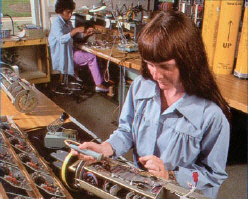Integrating Advanced Planning and Scheduling Software (Part 2)
In a previous post we started discussing the integration of production scheduling, production planning, or Advanced Planning and Scheduling software with your existing data bases and legacy software applications. We continue the discussion below.
Prepare Your Information Systems Group for Some Programming
Prospective customers often assume that data can simply be transferred directly from their existing systems to the planning and scheduling software. This is rarely the case 100% of the time, despite the fact that the software world has made amazing strides in connectivity between data bases.
Programming logic is typically built into the interface to manipulate or augment data as it is transferred between other data bases and the scheduling software. The manipulation is required because the systems involved might not hold data in the same formats. The augmentation is required because typically the production scheduling software requires more detailed data than may available in the customer’s other data bases.
An example of the manipulation data is the case of a customer who wants to group like work together to minimize set up. This customer uses “smart” part numbers, and among other characters, a portion of the part number holds data that identifies the part as being part of a part family. In this case the interface strips the part family data from the larger character string and writes the part family data in a field the scheduling software uses for minimizing set up.
An example of the augmentation of data is case of a customer that sometimes moves product between work centers in less than full order quantity (between machining operations) and in other cases moves product in full order quantity (after heat treat). The customer’s business system does not hold data that describes the relationships between operations. In this case, the interface checks the work center of the sending operation and, based on this work center, writes the appropriate relationship (overlap or sequential) to the proper field in the scheduling software.
Provide Your Information Systems Group Detailed Specifications
As keepers of technology that can greatly increase organizational efficiency, the time of your information systems group is always in high demand. Be respectful of their time. We’ve found that information systems groups do not react well to open ended, poorly thought through requests. We’ve found the best way to interact with information systems groups is through well thought out, detailed specifications. We strongly recommend that you and your Advanced Planning and Scheduling software vendor provide your information systems group with a detailed specification on the interface between other company data bases and your production planning and scheduling software.
